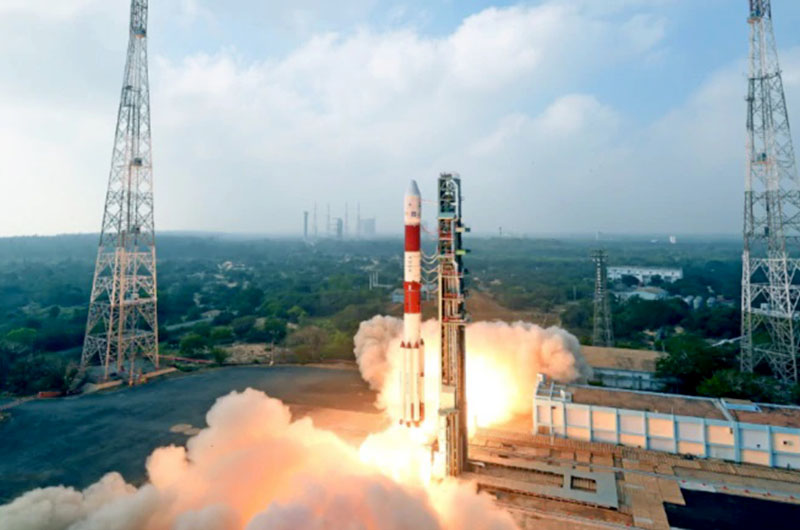On Wednesday, Indian Space Research Organisation (ISRO) successfully launched the advanced earth observation and mapping satellite CARTOSAT-3 along with 13 other commercial nano-satellites from the United States.
The space agency launched CARTOSAT-3 satellite, ninth in the series, from the second launch pad at the spaceport of Sriharikota. Although it was cloudy during its launch but the 44.4 metre tall PSLV C47 rocket lifted off majestically at 9.28 am.
ISRO said in an update on Tuesday that the “Launch is scheduled at 0928 hrs. IST on November 27, 2019.”
PSLV-C47 was on its 49th mission and carried CARTOSAT-3 along with 13 commercial nano-satellites from the US. CARTOSAT-3 is a third-generation agile advanced satellite having high-resolution earth imaging capability build so far.
It was placed into orbit 17 minutes and 46 seconds after lift-off. It is an immediate mission after Chandrayaan 2, where the lander crashed while making a soft descent on the lunar surface on September 7.
ISRO said that all the 13 nano satellites from the US were also released into the orbit at 26 minutes and 56 seconds after liftoff. ISRO Chairman K Sivan and other scientists were elated as the earth imaging and mapping satellite was injected precisely into the desired orbit.
Later on Chairman Sivan made a statement from the Mission Control Centre saying, “I am extremely happy to declare that PSLV-C47 precisely injected CARTOSAT-3 and 13 customer satellites successfully in the desired orbit of 509 kms.”
He also mentioned about its specificities and said, “CARTOSAT-3 is India’s highest resolution civilian satellite, and the most complex and advanced earth observation satellite ISRO has built so far.”
Along with this, he congratulated the teams behind the satellite as well as the launch vehicle and various review teams and industry partners involved in the mission.
He also mentioned about future missions and said, “Our hands are full,” with 13 missions slated up to March 2020. Furthermore, “They combine some six launch vehicle missions and seven satellite missions,” he said.









